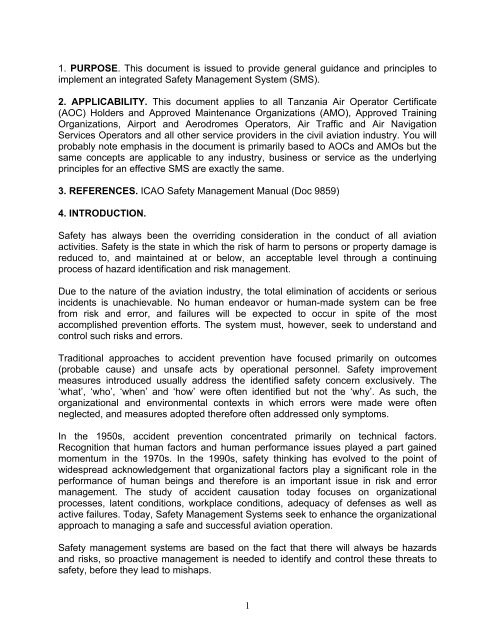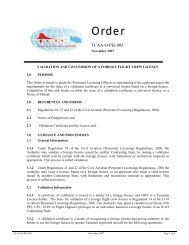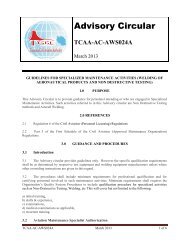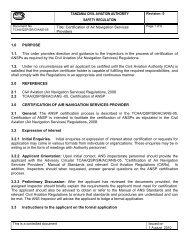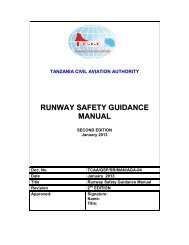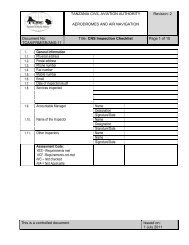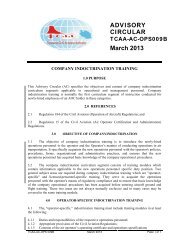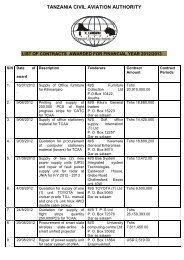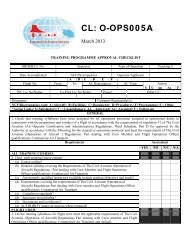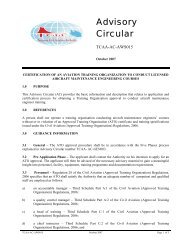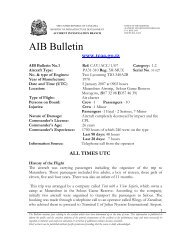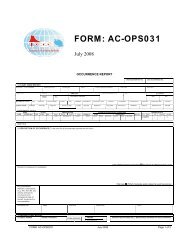08 - Tanzania Civil Aviation Authority
08 - Tanzania Civil Aviation Authority
08 - Tanzania Civil Aviation Authority
Create successful ePaper yourself
Turn your PDF publications into a flip-book with our unique Google optimized e-Paper software.
1. PURPOSE. This document is issued to provide general guidance and principles to<br />
implement an integrated Safety Management System (SMS).<br />
2. APPLICABILITY. This document applies to all <strong>Tanzania</strong> Air Operator Certificate<br />
(AOC) Holders and Approved Maintenance Organizations (AMO), Approved Training<br />
Organizations, Airport and Aerodromes Operators, Air Traffic and Air Navigation<br />
Services Operators and all other service providers in the civil aviation industry. You will<br />
probably note emphasis in the document is primarily based to AOCs and AMOs but the<br />
same concepts are applicable to any industry, business or service as the underlying<br />
principles for an effective SMS are exactly the same.<br />
3. REFERENCES. ICAO Safety Management Manual (Doc 9859)<br />
4. INTRODUCTION.<br />
Safety has always been the overriding consideration in the conduct of all aviation<br />
activities. Safety is the state in which the risk of harm to persons or property damage is<br />
reduced to, and maintained at or below, an acceptable level through a continuing<br />
process of hazard identification and risk management.<br />
Due to the nature of the aviation industry, the total elimination of accidents or serious<br />
incidents is unachievable. No human endeavor or human-made system can be free<br />
from risk and error, and failures will be expected to occur in spite of the most<br />
accomplished prevention efforts. The system must, however, seek to understand and<br />
control such risks and errors.<br />
Traditional approaches to accident prevention have focused primarily on outcomes<br />
(probable cause) and unsafe acts by operational personnel. Safety improvement<br />
measures introduced usually address the identified safety concern exclusively. The<br />
‘what’, ‘who’, ‘when’ and ‘how’ were often identified but not the ‘why’. As such, the<br />
organizational and environmental contexts in which errors were made were often<br />
neglected, and measures adopted therefore often addressed only symptoms.<br />
In the 1950s, accident prevention concentrated primarily on technical factors.<br />
Recognition that human factors and human performance issues played a part gained<br />
momentum in the 1970s. In the 1990s, safety thinking has evolved to the point of<br />
widespread acknowledgement that organizational factors play a significant role in the<br />
performance of human beings and therefore is an important issue in risk and error<br />
management. The study of accident causation today focuses on organizational<br />
processes, latent conditions, workplace conditions, adequacy of defenses as well as<br />
active failures. Today, Safety Management Systems seek to enhance the organizational<br />
approach to managing a safe and successful aviation operation.<br />
Safety management systems are based on the fact that there will always be hazards<br />
and risks, so proactive management is needed to identify and control these threats to<br />
safety, before they lead to mishaps.<br />
1


